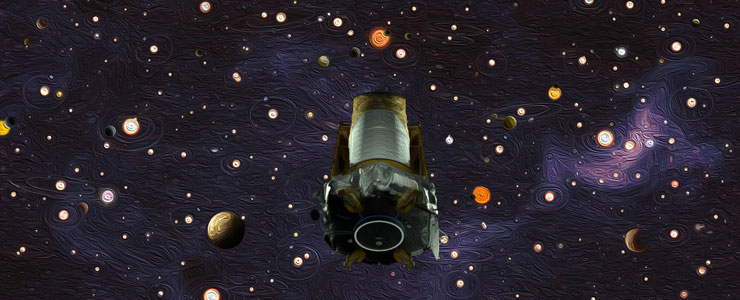2019 Mandel Lecture
Lava Worlds to Living Worlds:
How a NASA Mission Sparked the Search for Life Beyond Earth
Rio Theatre, 1205 Soquel Ave, Santa Cruz
After almost 10 years in space, NASA's Kepler Mission was recently retired, but not without making an indelible imprint on humankind's understanding of the universe. Perhaps its greatest legacy is the knowledge that planets outnumber stars in the galaxy. With over 2,500 planet discoveries and another 2,000 awaiting confirmation, Kepler revealed a staggering diversity of worlds, turning sci-fi fantasy into scientific reality. The Mission changed our collective perspective regarding the feasibility of finding evidence of life beyond Earth and catalyzed efforts across the globe to reach that goal, including right here at UC Santa Cruz. In this illustrated, nontechnical presentation, astrophysicist and planet hunter, Dr. Natalie Batalha, will share highlights from the mission and describe the exciting initiatives already underway to usher in the next decades of exoplanet exploration.
Speaker:
-
Natalie Batalha
 Natalie Batalha Professor of Astronomy and Astrophysics, UC Santa Cruz Award-winning astrophysicist Natalie Batalha served as the scientific lead for NASA's highly successful Kepler mission, which discovered more than 2,500 planets around other stars. When the Kepler space telescope retired in October 2018, Natalie left NASA to join the faculty at UC Santa Cruz, returning to where she had received her Ph.D. in astrophysics in 1997. On the Kepler mission, she identified planets that might be able to sustain life and led the analysis that yielded the discovery in 2011 of the first confirmed rocky planet outside our solar system. In 2017, Time magazine named her among the 100 most influential people in the world.
Natalie Batalha Professor of Astronomy and Astrophysics, UC Santa Cruz Award-winning astrophysicist Natalie Batalha served as the scientific lead for NASA's highly successful Kepler mission, which discovered more than 2,500 planets around other stars. When the Kepler space telescope retired in October 2018, Natalie left NASA to join the faculty at UC Santa Cruz, returning to where she had received her Ph.D. in astrophysics in 1997. On the Kepler mission, she identified planets that might be able to sustain life and led the analysis that yielded the discovery in 2011 of the first confirmed rocky planet outside our solar system. In 2017, Time magazine named her among the 100 most influential people in the world.
